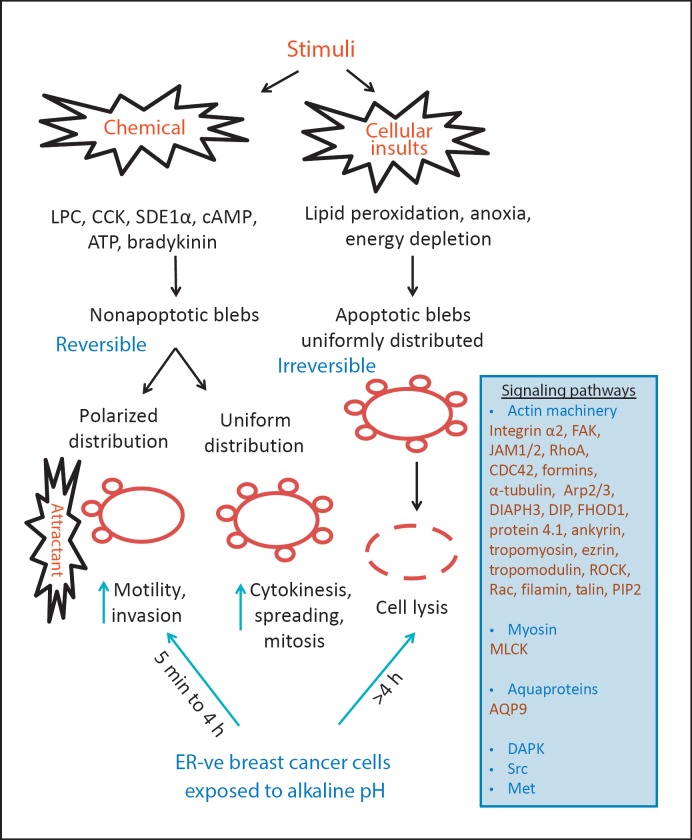Fig. 1.
Various stimuli and molecules involved in the formation of apoptotic and nonapoptotic blebs. Cellular blebbing can be induced in response to various mechanical and chemical stimuli and leads to the activation of several downstream signaling molecules depending on the stimuli and cell type. These protrusions have been shown to play an important role in various physiological and pathophysiological conditions, such as immune-related conditions and cancer pathogenesis, as discussed in the text. Apoptotic cells exhibit uniform blebbing that eventually results in cell lysis, whereas nonapoptotic blebs are reversible and involved in motile functions necessary for directional cellular migration. In the case of endocrine-resistant cancer cells, a high external pH can induce either condition depending upon the time of exposure. The panel on the right lists the molecules that have been implicated in bleb formation.

